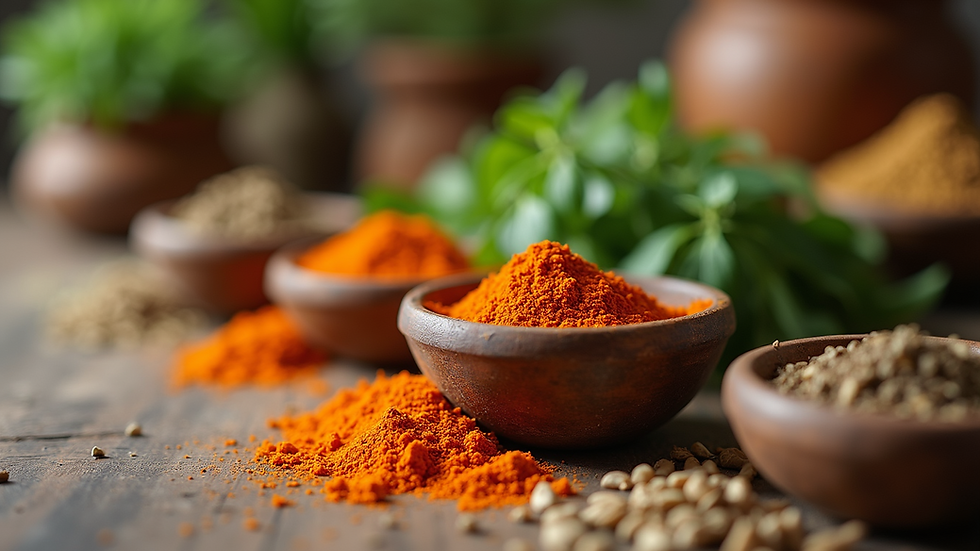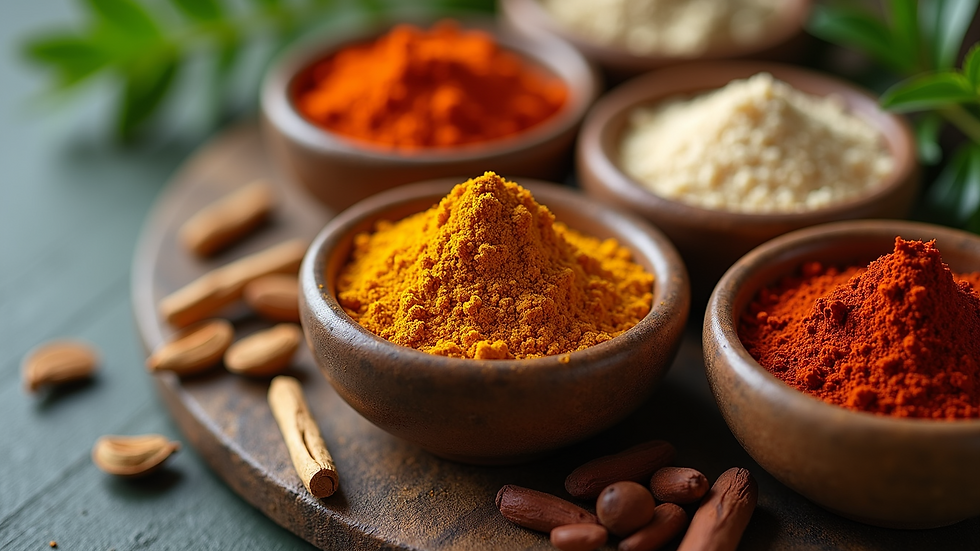Ayurvedic Approaches to Achieving Holistic Wellness
- prexim
- Jul 21
- 5 min read
In a world that often feels rushed and filled with stress, many individuals are seeking effective ways to improve their overall well-being. One approach that has stood the test of time is Ayurveda—a holistic system of medicine that emphasizes balance in the body, mind, and spirit. This ancient Indian practice focuses on understanding one's unique constitution, or dosha, and aligning lifestyle choices accordingly. Let's explore the various Ayurvedic approaches to achieving holistic wellness, providing practical tips and insights along the way.
Holistic Wellness
Holistic wellness encompasses a state of complete physical, mental, and emotional well-being. It moves beyond the absence of disease and focuses on the whole person, promoting a balanced lifestyle. Ayurveda fits perfectly into this concept, as its principles guide individuals on how to nurture their health in a compatible way with their body and environment.
One of the cornerstones of Ayurveda is the idea of balance, derived from the five elements: earth, water, fire, air, and ether. Each person has a unique blend of these elements, which form their dosha, influencing their tendencies toward health and imbalance. By identifying your dosha—Vata, Pitta, or Kapha—you can tailor your daily practices for a more harmonious life.

Understanding Your Dosha
Vata Dosha
Vata is characterized by air and space elements. Those with a dominant Vata tend to be creative, energetic, and alert, but they may also experience anxiety or restlessness when out of balance. To stabilize Vata, Ayurveda recommends:
Diet: Incorporate warm, nourishing foods, such as soups, stews, and cooked vegetables. Avoid cold and raw foods.
Lifestyle: Establish a routine. Regular sleep patterns and practices like yoga can help ground Vata energy.
Pitta Dosha
Pitta is ruled by fire and water. Individuals with a Pitta constitution are often strong-willed, determined, and focused but can become aggressive or overheated when imbalanced. Strategies to bring Pitta back into balance include:
Diet: Eat cooling foods such as cucumbers, melons, and leafy greens. Avoid spicy and fried dishes.
Lifestyle: Engage in calming exercises, like swimming or hiking in nature, and practice mindfulness to soothe excess Pitta energy.
Kapha Dosha
Kapha is a combination of earth and water. Those with a Kapha constitution are typically nurturing, stable, and loyal but can also struggle with lethargy and attachment. To balance Kapha, consider:
Diet: Choose light, dry foods, such as legumes, bitter greens, and spices. Minimize heavy and dairy foods.
Lifestyle: Incorporate vigorous exercises and avoid excessive sleep to counterbalance Kapha’s lethargic nature.
Understanding your dosha is the first step toward personalized holistic wellness. You can find out which dosha you belong to through an online quiz or by consulting an Ayurvedic practitioner.

Importance of Detoxification
Detoxification in Ayurveda, known as Panchakarma, plays an essential role in maintaining holistic wellness. It aims to cleanse and rejuvenate the body, removing accumulated toxins (ama) that can lead to disease. Here are some key practices involved in detoxification:
Oil Massage (Abhyanga): This practice involves applying warm oils to the body, helping to loosen toxins and improve circulation.
Steaming: Steaming helps open pores and eliminate toxins through sweat. It can also soothe muscles and promote relaxation.
Dietary Changes: During detox periods, Ayurvedic practitioners recommend a mono-diet—consuming a single type of food, like kitchari, to simplify digestion and allow the body to focus on cleansing.
Herbal Support: Incorporating specific herbs, like Triphala or Turmeric, can support detoxification and promote overall health.
Detoxification can be undertaken at home or through retreat centers specializing in Ayurvedic practices. Regardless, integrating regular detoxification rituals into your life can greatly contribute to long-term wellness.
The Role of Mindfulness and Meditation
In Ayurveda, the mind and body are interlinked. To achieve holistic wellness, one must also focus on mental health. Mindfulness and meditation are critical components of Ayurvedic practice, offering numerous benefits:
Stress Reduction: Mindfulness helps you remain grounded and reduces the impact of stressors on your life. Techniques such as breathwork or guided meditations can cultivate a sense of peace.
Enhanced Awareness: Meditation fosters self-awareness, leading to better decision-making in all aspects of health, from diet to daily habits.
Improved Emotional Balance: Regular meditation practice can help regulate emotions, leading to a more optimistic and balanced perspective on life.
To get started, consider setting aside just a few minutes each day for mindfulness or meditation. Over time, you can increase the duration and explore different techniques that resonate with you.

Integrating Daily Routines for Balance
Daily routines are crucial in Ayurveda for balancing energies and promoting holistic wellness. Here are some practical tips to establish a daily routine that supports your wellness journey:
Morning Rituals
Wake Early: Rising before sunrise is said to maximize productivity and mental clarity.
Hydration: Start your day with warm water and lemon to stimulate digestion and flush out toxins.
Yoga or Stretching: Gentle morning stretches or yoga can wake up the body and mind, setting a positive tone for the day.
Evening Rituals
Wind Down: Designate time to relax, whether it's reading a book, enjoying herbal tea, or reflecting on your day.
Digital Detox: Limiting screen time an hour before bed can help improve sleep quality and foster deep relaxation.
Gratitude Journaling: Reflect on the positive aspects of your day by jotting them down. This practice cultivates an optimistic mindset.
By establishing routines that resonate with your dosha and lifestyle needs, you can foster balance and promote holistic wellness seamlessly.
Embracing Nature and the Environment
Ayurveda emphasizes the importance of connecting with nature to restore balance and promote holistic wellness. Spending time outdoors can have profound effects on mental and physical health. Here are some ways to integrate nature into your wellness journey:
Nature Walks: Engaging in regular walks or hikes in natural settings can reduce stress and enhance mood.
Gardening: Cultivating your own herbs and plants not only connects you with the earth but also provides fresh ingredients for your meals.
Mindful Outdoor Activities: Engage in activities like forest bathing, which promote mindfulness through sensory engagement with nature.
Each of these activities can help ground you, reduce stress, and nurture your connection to the world around you.
Embracing Ayurvedic practices can guide you toward a path of holistic wellness rooted in balance and harmony. Whether you’re adjusting your diet, creating a calming routine, or integrating mindfulness, these ancient wisdoms provide exciting insights into nurturing your health.
With the right approaches and consistent effort, you can weave holistic wellness into the fabric of your everyday life. Remember that is not a destination—it's a lifelong journey toward balance and health. For further information on natural wellness solutions, seek out practitioners or resources that resonate with your personal journey.
By adopting these Ayurvedic principles and fostering a deeper understanding of yourself, you can create a fulfilling life and embrace the beauty of holistic wellness.




Comments